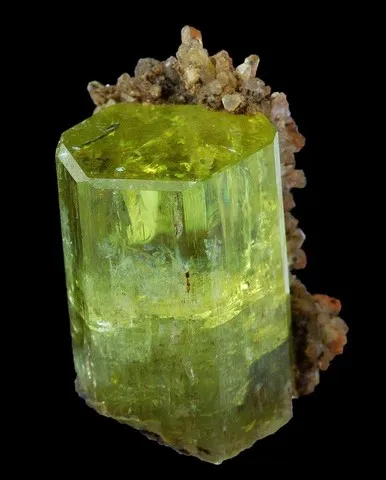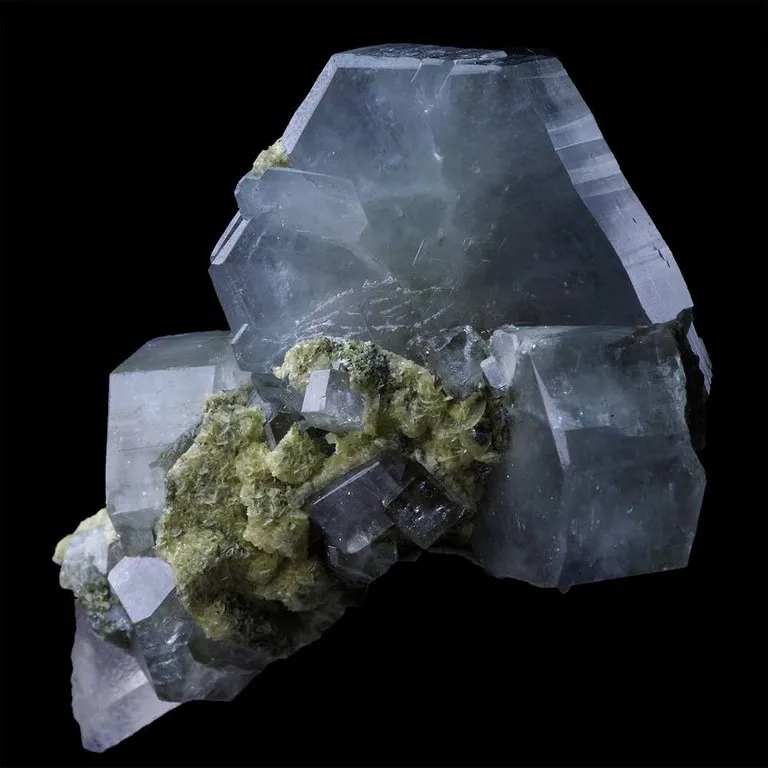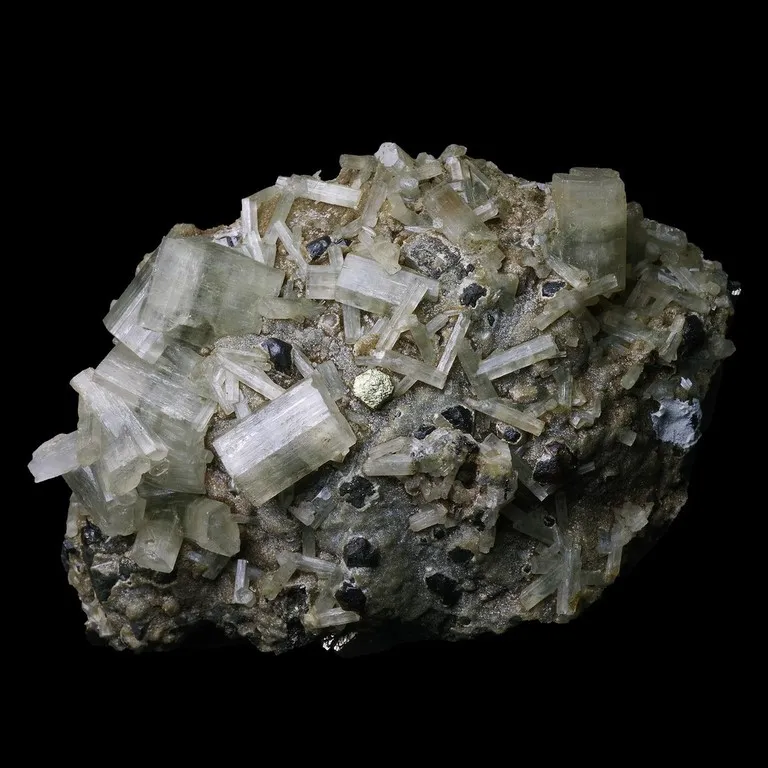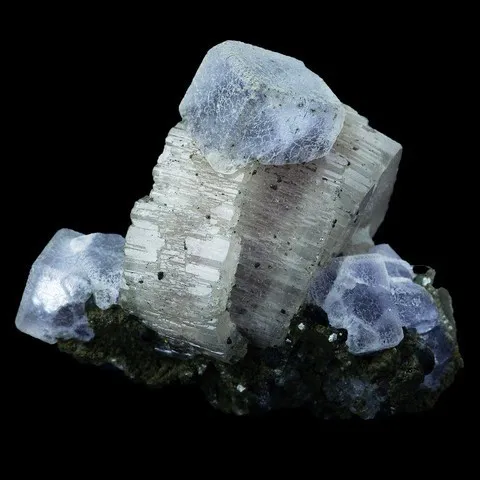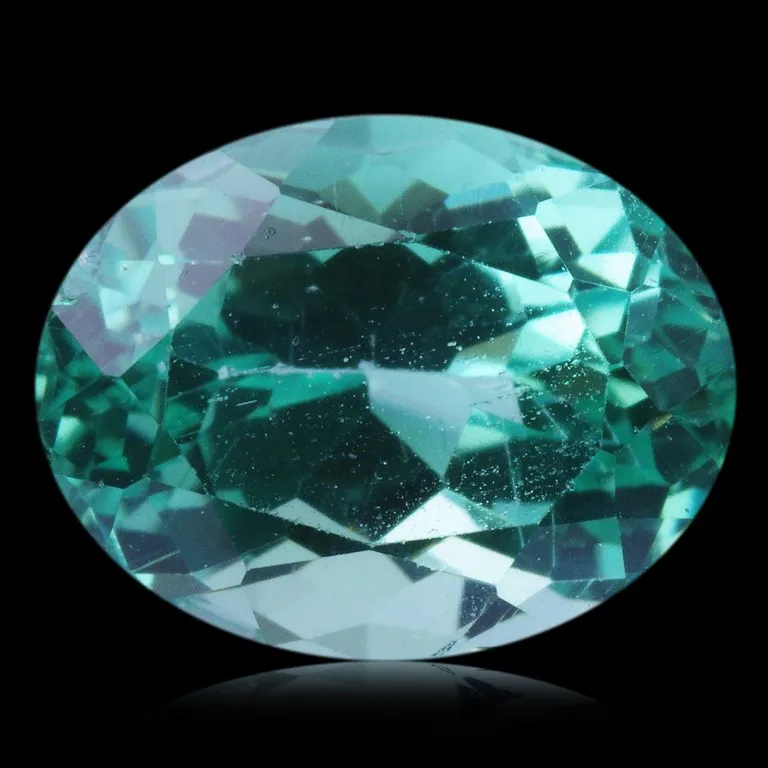APATITE
Class : Phosphates, arsenates, vanadates
Subclass : Anhydrous phosphates
Crystal System : Hexagonal
Chemistry : Ca5(PO4)3(F,Cl,OH)
Rarity : Very common
The apatite was a mineral for a long time, but the multiple subtitutions between elements make its chemistry so variable that the apatite is today considered as a group, the most important and the most abundant group of phosphates. The different minerals are named according to the predominant anion : OH (hydroxylapatite), F (fluorapatite) or Cl (chlorapatite), and depending on the possible partial subtitution of the (PO4) groups by (CO3F) or (CO3OH) groups, then forming carbonate-apatites (respectively carbonate-fluorapatite and carbonate hydroxylapatite). In addition, because of the possibilities of substitution between P, As and V, there are possibilities of solid solutions extended in the apatite. It owes its name to the Greek apatan (deceive) because it is often confused with other minerals of similar appearance (emerald, olivine, tourmaline). The apatites usually present as short or elongated prismatic crystals, of hexagonal habit, in tabular crystals sometimes flattened or even acicular or in crystalline masses sometimes concretized or oolitic. Their colors vary enormously, ranging from colorless to green, blue-green, purple, sometimes yellow, brown, pink, etc... The risk of confusion with beryl is quite high, it is however significantly harder. Apatite is ubisquist, present in almost all types of rock : plutonic, sedimentary, metamorphic in particular in some pegmatites and marbles where the crystals can reach large dimensions. It is particularly abundant in alkaline rocks (nepheline syenites and carbonatites) and common in high temperature hydrothermal veins. Apatite is the almost exclusive source of phosphorus, which is the basis of the manufacturing process for phosphate fertilizers, detergents and certain animal foods. Apatite gems are also much cut for jewelery.
Apatite in the World
Hydroxylapatite : much less common than fluorapatite, the largest crystals still exceed 30 cm and come from Frontenac marble (Ontario, Canada). Magnificent transparent yellow-green crystals were extracted from Holly Spring (Georgia) and the alpine fissures of Fibbia (Saint Gotthard Massif) produced superb colorless to purple crystals assembled into spheroidal aggregates.
Chlorapatite : it is found in white crystals of 5 cm in Snarum serpentinites (Norway), but also in Dashkezan (Azerbaijan). It is found anecdotally in microspherules in some meteorites.
Apatite in France
Hydroxylapatite : in France it is reported at Davignac in Corrèze in centimetric white crystals.
Chlorapatite : it is only reported in meteorites whose point of fall is located on the French territory (Salles, Chassigny, St-Séverin).
Twinning and special crystallization
No twin known for the species. So, apatite is present in exceptional concentration in phosphorites, layer of very thick marine sedimentary phosphates composed of cryptocrystalline apatite concretized or mammillated called collophane (or collophanite). These phosphorites are formed by the accumulation of skeletons of marine animals near the paleoshores. The deposits of Morocco are the most important in the world. Bones and teeth are composed for a large part of apatite, as well as kidney stones.
Fakes and scams
Many apatites gemstones especially in blue hues have undergone a thermal treatment (heating).
Hardness : 5
Density : 3.1 to 3.25
Fracture : Irregular to conchoidal
Trace : White
TP : Translucent to transparent
IR : 1.627 to 1.650
Biréfringence : 0.004
Caractère optique : Uniaxial -
Pléochroïsme : Moderate
Fluorescence : Yellow, orange, blue, green
Solubilité : Nitric and hydrochloric acid
Magnétisme : None
Radioactivité : None to very weak

